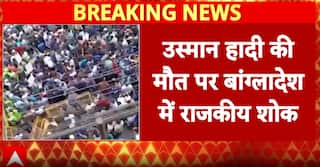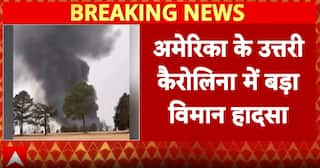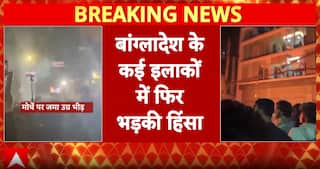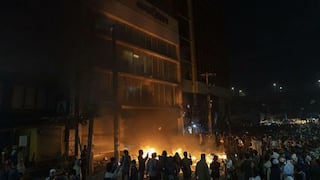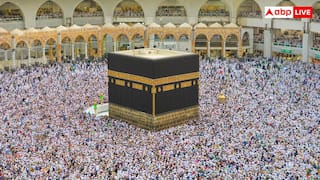EXPLAINED: How NASA's James Webb Telescope Will Help Unravel Secrets Of Cosmos & Earliest Galaxies
The James Webb Space Telescope will be a powerful time machine with infrared vision that will look back in time, to see the first stars and galaxies forming out of the darkness of the early universe.

New Delhi: Decades of wait is set to end as the James Webb Space Telescope, the most powerful space observatory ever built, will be launched on Christmas from South America's French Guiana.
The James Webb Space Telescope (JWST), also called Webb, is a large, space-based, infrared observatory that will complement and extend the discoveries of the Hubble Space Telescope. Webb has been 25 years and billions of dollars in the making.
Development of the $10 billion telescope began in 1996. The infrared telescope is the largest space observatory ever built, and the first of its kind. It is 100 times more powerful than Hubble, and has been folded origami-style to fit in the rocket atop which it will be launched.
JWST will be launched atop an Ariane 5 rocket on Saturday, December 25, at 7:20 am EST (5:50 pm IST). It will blast off into space from Arianespace's ELA-3 launch complex at the European Spaceport located near Kourou, French Guiana.
ALSO READ: James Webb Space Telescope Launch On Christmas Day: When And How To Watch It Live
Webb will cover longer wavelengths of light than Hubble and will have greatly improved sensitivity. The longer wavelengths will enable Webb to look further back in time to see the first galaxies that formed in the early universe, NASA said on its website. The primary goal of JWST will be to study galaxy, star, and planet formation in the universe.
JWST is an international collaboration between NASA, the European Space Agency (ESA), and the Canadian Space Agency.
The telescope will be a giant leap forward in our desire to understand the Universe and its origins. The telescope will examine every phase of cosmic history, from the first luminous glows after the Big Bang to the formation of galaxies, stars, and planets, and the evolution of our own solar system.
How Will JWST Observe The Early Universe?
JWST will be a powerful time machine with infrared vision that will look back in time, more than 13.5 billion years, to see the first stars and galaxies forming out of the darkness of the early universe.
Webb will answer questions on how the universe's first light looked like by studying the stars that fused existing hydrogen atoms into more helium. The telescope can see back to about 100 million to 250 million years after the Big Bang. It will use infrared light to understand the early universe.
How Will JWST Observe The Earliest Galaxies?
JWST will perform ultra-deep, near-infrared surveys of the universe, followed by low-resolution spectroscopy, which is the study of absorption and emission of light, and radiation by matter. The telescope will also perform mid-infrared photometry, which is the measurement of the intensity of an astronomical object's electromagnetic radiation.
Webb's unprecedented infrared sensitivity will help astronomers compare the faintest, earliest galaxies to the grand spirals and ellipticals of the present day. This will help scientists understand how galaxies assemble over billions of years.
The telescope will answer questions such as how galaxies are formed, what gives them their shapes, how chemical elements are distributed through the galaxies, how the central black holes in galaxies influence their host galaxies, and what happens when small and large galaxies collide or join together.
Using the data collected by Webb, scientists can also understand what types of stars existed in the very early galaxies.
How Will JWST Unravel Secrets Of Birth Of Stars & Planets?
Scientists still do not know the details of how clouds of gas and dust collapse to form stars, and exactly how planetary systems form. Webb will help scientists obtain the answers to such questions.
Webb will see right through massive clouds of dust that are opaque to visible-light observatories such as the Hubble Space Telescope. Stars and planetary systems are being born in such massive clouds.
Such regions cannot be observed at visible light wavelengths as the dust would make such regions opaque and must be observed at infrared wavelengths.
Also, the telescope's observations will help researchers understand the complex ways in which young stars within a star-forming region interact with each other, and how stars evolve and release the heavy elements they produce back into space. After being released, the elements are recycled into new generations of stars and planets, and Webb's data will explain how these processes occur.
How Will Webb Search For Other Worlds?
JWST will tell scientists more about the atmospheres of extrasolar planets, and may even find the building blocks of life somewhere else in the universe. The telescope will study objects within our Solar System, as well as other planetary systems.
Webb will use the transit method to study exoplanets, which means it will look for dimming of the light from a star as its planet passes between Earth and the star. Radial velocity technique, which is the method of measuring the stellar wobble produced by the gravitational tug of a planet, will be used to measure the mass of planets. After this, Webb will perform a spectroscopy of the planet's atmosphere.
Webb will be equipped with coronagraphs (telescopes used for the observation of a star's corona) which will enable direct imaging of exoplanets near bright stars. Though the image of an exoplanet will just be a spot, scientists can learn a lot about the exoplanet, including its colour, differences between winter and summer, vegetation, rotation, and weather.
Scientists need to study planet formation and evolution to trace the origins of Earth and life in the Universe. The sensitive instruments on JWST will be able to obtain infrared images of giant planets and planetary systems, and characterise their ages and masses by measuring their electromagnetic spectra. The telescope will also measure the spectra of the disks around stars to determine the constituents of protoplanetary disks that lead to the formation of planetary systems.
JWST will be powerful enough to identify and characterise comets and other icy bodies in the outermost reaches of the solar system. Objects such as those in the Kuiper Belt and comets may contain clues to our origins on Earth.
Webb will enable several science investigations in our own solar system. The telescope will offer near- and mid-infrared spectral coverage and sensitivity, which complements other Solar System missions of NASA.
Webb has an unprecedented sensitivity and spectral resolution, which is not found in most planetary missions. This means that a lot will be understood about the composition of most solar system targets. For instance, JWST can search for molecules that may be signs of past or present life in the Martian atmosphere, and conduct global studies that complement the findings of the rovers and landers sent to Mars.
Webb can also detect new moons, rings, watch storms, and monitor impact events of the giant planets of the solar system.
What Are The Other Exciting Things Webb Will Observe?
The observations of JWST may help us learn about how galaxies got supermassive black holes in their centres, and whether black holes caused the galaxies to form, or it was the other way round. It is not possible to peer inside dust clouds with high resolution, but Webb will be able to observe the clouds where stars and planets form.
Also, Webb can tell us whether some Earth-like planets have enough water to support life. The telescope can also help scientists learn more about dark matter and dark energy, among other surprises.













